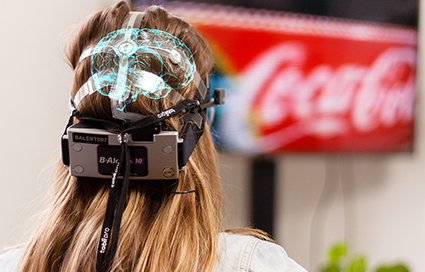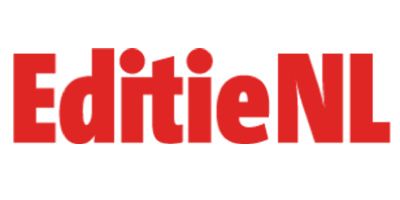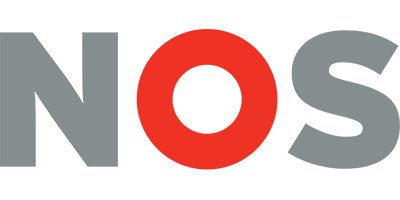
Sooner or later, every product must face it: it gets a makeover.
A packaging redesign is always an exciting moment for marketers. Although the fresh new design is hoped to spark attention, relevance, and marketability of the product, history has shown more than once that it can go disastrously wrong.
You don't have to flip through a retail handbook for long to come across cases of revamped packaging that have caused significant damage to the brand.
The packaging plays a crucial role in grabbing attention in the store, making the brand easily findable, and striking precisely that mental chord that resonates in a purchase decision. And precisely because of this great importance of packaging, there is potentially much to lose when you give an existing package a new look.
In this blog, we therefore take a scientific look at the psychology behind packaging, especially when that packaging is given a new design. What requirements must a package meet? What does this mean for successful redesigns? And how can you investigate in advance whether a redesign will succeed or fail?
Trouwens, laatst gaven we een - gratis - lunchwebinar precies hierover. In dit webinar onthulden Tim en Tom de laatste neuromarketing-inzichten over effectief (re)design van verpakkingen. Je krijgt exact inzicht in welke psychologische factoren een redesign maken of breken.
Aangezien je dit blog leest, dacht ik dat je deze webinar helemaal mooi zal vinden! Terugkijken kan heel simpel via deze link. Ik ben benieuwd wat je ervan vond!
An Example of How Not to Do It: Tropicana
Chances are you recognize it—the Tropicana packaging with a straw stuck into an orange. Although the brand is only available in expat shops in the Netherlands, its iconic logo remains etched in everyone's memory.
A brilliant example of effective marketing. Yet, a few years ago, Tropicana's marketers decided it was time to retire the iconic orange and straw after decades of loyal service. They introduced a completely new, modern design. The straw was replaced with a stemmed juice glass—one of those glasses that’s likely been gathering dust at the back of your cupboard for years. The font was modernized and rotated 90 degrees, and the orange disappeared altogether.
Sales Plummeted by 20%
After the introduction of the packaging, Tropicana's sales plummeted. Overnight, the sales volume had shrunk by 20%.
For Tropicana's management team, this was reason to intervene. Within 6 weeks, the former packaging was back on the shelf and sales quickly recovered.
The Tropicana redesign reveals an important lesson on how dramatically redesigns can go wrong. But what exactly went wrong? To understand that, we need to grasp the three basic functions of packaging:
- Noticeability. To what extent does the packaging spontaneously stand out? Where the original Tropicana packaging contained high contrast, an edible object, and an easily readable design (all three conducive to spontaneous attention), this was considerably less with the new packaging.
- Findability. Our brain is lazy. When we are looking for a brand, it should stand out effortlessly. However, the new packaging has pushed aside many existing distinctive features of the Tropicana brand. As a result, the shopper has to make more effort to find the packaging.
- Purchase Activation. Finally, the packaging must consciously or unconsciously communicate positive value to activate a purchase. Where the existing packaging strongly associated with freshness (due to the presence of the orange), the new packaging showed an unusual glass that only 1% of the population would actually drink from.
How to Predict the Success of a Redesign
As we saw in the previous section, every packaging faces the same three challenges: Standing out. Brand recognition. Purchase activation.
Every product and packaging design that reaches the checkout owes this to its ability to stand out, activate the brand, and evoke desire. Unravel encapsulates these three success indicators of packaging in the Three Steps to Purchase™ model.
When you give a package a new look, you want to know exactly how your new packaging compares to the existing packaging on the three success dimensions.
Until recently, the noticeability, findability, and purchase activation of a package were not well measurable. Although you can ask about it, traditional research methods are too slow and rational to reveal much meaningful about something as unconscious and emotional as packaging. Neuromarketing research has provided a suitable research solution for several years and is the most accurate predictor of packaging success before the product hits the shelves.
Gratis Webinar: Zo voorkom je Redesign Rampen🧠
Elke verpakking is vroeg of laat toe aan een nieuw likje verf. Je wilt met die nieuwe verpakking natuurlijk meer aandacht grijpen en vaker in het winkelmandje terechtkomen. Echter, soms gaat het mis. Hoe voorkom je Redesign Rampen? In dit webinar krijg je exact inzicht in welke psychologische factoren een redesign maken of breken.
👉 Hoe zorg je ervoor dat jouw merk vindbaar blijft?
👉 Hoe voorspel je de effectiviteit van een nieuw design?
👉 Wat hebben cases uit de praktijk ons geleerd?
De 60 minuten durende webinar is nu terug te kijken!
Bekijk de webinar via deze link <
Noticeability (=spontaneous attention)
Measurement Method: Eye Tracking
Sales begin with the battle for attention. Successful products automatically draw the eye. Through Eye Tracking, we can measure this process. By showing a shelf and allowing the shopper to make a free choice, we measure the extent to which your product stands out when people look around freely.
Unravel's Eye Tracking equipment is considered the most advanced of its kind, measuring 128 times per second where the customer's eyes are focused. This way, we map the attention value of your product with extreme precision.
Findability (=goal-directed attention)
Measurement Method: Eye Tracking and Distinctive Brand Asset Research
The findability of your packaging is the extent to which your product stands out when people are actively looking for it. This goal-directed attention can also be measured with eye tracking, by measuring the speed with which people can locate the packaging.
Brand recognition is supported by the use of distinctive brand assets on the packaging. Brand Assets are the (often visual) properties that are unique and distinctive for your brand. Think of logo, colour, typography, packaging shape, slogan, etc.
If you want to know in advance which of your brand assets are leading in the recognisability of your brand (and which you can safely adjust), it is useful to have a distinctive brand asset research conducted at Unravel Research.
Value Communication & Purchase Activation
Measurement Method: EEG
One package is simply more attractive than another. Where this degree of unconscious desire could not be measured until recently, neuromarketing research with EEG now offers the first objective method to map the attractiveness of a package. EEG is a method to measure brain activity comfortably in realistic settings.
As soon as our eye falls on a package, our brain makes a judgment within 400 milliseconds whether the package is worth further inspection. This lightning-fast desire response can only be measured with the high measurement speed of EEG.
EEG comfortably measures 256 times per second what is going on in the respondent's brain. Thus, we not only measure the desire performance of the overall package, but we also dissect the exact emotional impact of each visual, claim, and other information.
Want to Read More About Neuromarketing Packaging Research?
Neuromarketing research with Eye Tracking and EEG forms the designated combination of methods to predict whether your packaging redesign is on the right track. It is also very suitable for testing multiple design routes in advance to select the most promising one.
Click here to learn more about neuromarketing research for packaging.






